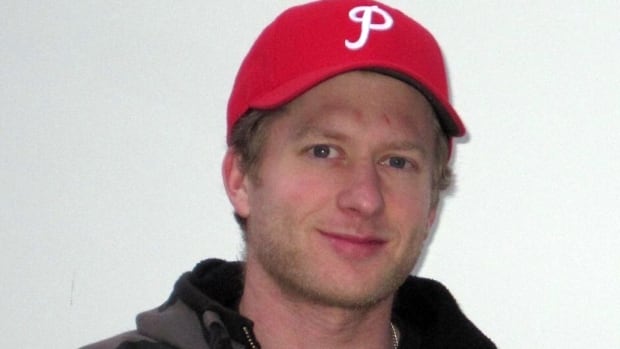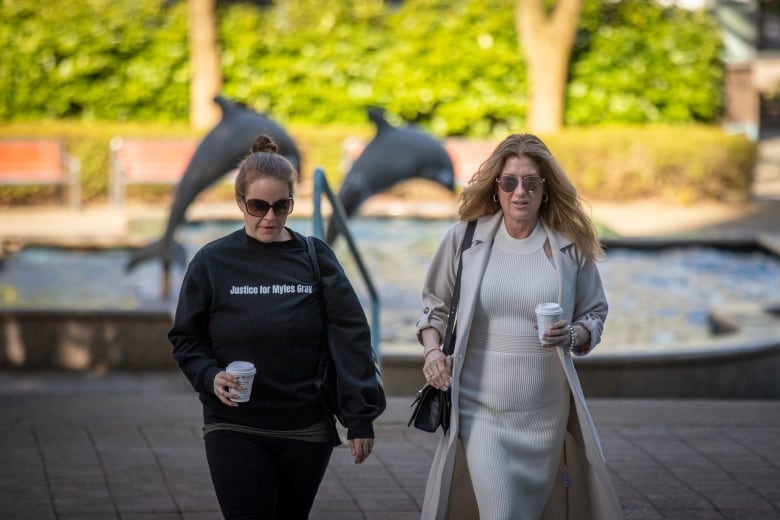
The final full day of an inquest into the death of a man beaten by Vancouver police began Friday with the presiding coroner rejecting a request from the family’s lawyer to have a photo showing his body at the scene of his struggle with police officers submitted as evidence for the jury to see.
Lawyer Ian Donaldson, representing the family of Myles Gray, asked to have one picture entered on the basis that it would be “helpful” to the jury as they prepare to analyze days of testimony to classify Gray’s manner of death.
“A picture is worth 1,000 words,” said Donaldson.
Gray, 33, died shortly after a fight with seven police officers in a forested backyard in Burnaby, B.C., on Aug. 13, 2015. The two-week inquest heard from officers who spoke about their actions publicly for the first time, as well as firefighters, paramedics, personnel from B.C.’s police watchdog, a toxicologist and the forensic pathologist who performed the autopsy.
A coroner’s inquest does not make findings of legal responsibility, but the five jurors are tasked with classifying Gray’s death as either an accident, a homicide, a suicide, natural or as undetermined.
They will also make recommendations aimed at preventing similar deaths in future.
Gray’s mother, Margie Gray, pushed to have the photo of her “unrecognizable” son shown to the jury after seeing it in Donaldson’s hand during proceedings.
On Friday, lawyers appearing on behalf of the Vancouver Police Department and Chief Const. Adam Palmer opposed the application to have the photo entered as evidence on the basis that it was unnecessary, given the other evidence before the jury.

Christine Joseph, representing the seven police officers involved in the fight, said jurors heard “a plethora of evidence” about the extent of Gray’s injuries, including testimony from nearly two dozen witnesses and written details from the autopsy report.
“It is not necessary for the jury to have [the photo], and I believe it is counter-productive to what [jurors] need to do,” said Joseph, who also raised concerns about the picture’s potentially “emotional or traumatic effect” on the jury.
David McKnight, representing the police department, said the photo would be “highly prejudicial” — or harmful — to the inquest process because jurors would be left to make decisions “about what the photo does or doesn’t show” without the opportunity to question witnesses.
Presiding coroner ‘torn’ between transparency, procedure
Agreeing with inquest counsel, presiding coroner Larry Marzinzik determined the photo would not be allowed at the late stage in the inquest because witnesses do not have the chance to offer context.
“I’m torn between complete transparency and proper procedure,” said Marzinzik.
“Do I agree with [family lawyer] Mr. Donaldson that the photograph could’ve added value? Most likely, at the proper time in the proceedings — not at the end of the proceedings prior to discharging the jury.”
Margie Gray left the room after Marzinzik made his decision.
The inquest is scheduled to end Friday, though it could resume next week after the start of Friday’s proceedings was delayed for two hours.
The forensic pathologist who autopsied Gray’s body designated his cause of death as “cardio-pulmonary arrest” complicated by police officers having restrained him on the ground. Dr. Matthew Orde told the jury he believed Gray was experiencing an “acute behavioural disturbance” but that he does not believe Gray would have died had it not been for police actions.
Gray had been in Vancouver making a delivery to a florist’s supply shop for his Sechelt, B.C.-based business. Police were initially called after residents reported an agitated man without a shirt had sprayed a woman with a garden hose.

